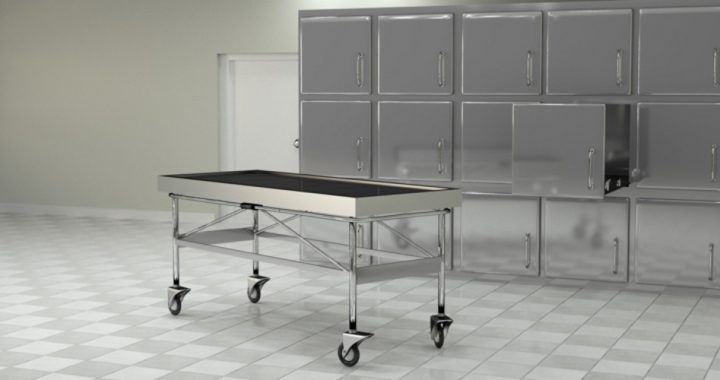
The autospy on Jeffrey Epstein, the mega-wealthy sex criminal found dead in his jail cell on Saturday, has revealed broken neck bones that are more consistent with strangulation than with suicide.
The report on the autopsy in the Washington Post again raises the question, as The New American reported, of whether Epstein, indicted for sex trafficking girls as young as 14, was the victim of a Deep State hit given his connection to and knowledge of rich and powerful global elites.
The Post provided a detailed report not just on Epstein’s autopsy but on why it shows that Epstein might have been murdered.
What the Broken Bones Mean
According to the Post, Epstein’s hyoid bone was broken, which can occur in suicides of older men. “But they are more common in victims of homicide by strangulation, the experts said.”
Just above the Adam’s apple, the hyoid is the only bone in the anterior of the neck, an anatomy website explains, and does not directly connect with other bones. It stabilizes the neck, anchors the tongue, and moves up during swallowing.
The autopsy was finished Sunday. Sources told the Post that the office of New York City’s chief medical examiner, Barbara Sampson, is still asking questions about the death given the hyoid break.
Jonathan L. Arden, president of the National Association of Medical Examiners, said a hyoid can be broken in many circumstances but is more commonly associated with homicidal strangulation than suicidal hanging.
Arden, who was not involved in the Epstein autopsy, said that in general, a finding of a broken hyoid requires pathologists to conduct more extensive investigation. That investigation can include analysis of the location of the noose, how narrow the noose is, and if the body experienced any substantial drop in the course of the hanging.
The age of the deceased is also important, Arden said. The hyoid starts out as three small bones with joint-like connections but hardens during middle age into a U-shape that can break more easily.
“If, hypothetically, the hyoid bone is broken, that would generally raise questions about strangulation, but it is not definitive and does not exclude suicidal hanging,” he said.
The Post cited two studies that showed the hyoid rarely breaks in a suicidal hanging. One study of 20 such deaths in Thailand turned up just five. Another study in India showed that just 16 of 264 cases, or six percent, showed broken hyoids.
As well, the Post reported, hyoid fractures were a bone of contention in other suspicious or at least controversial deaths.
One involved a young prisoner in 2008. He supposedly died by his hand. But an autopsy that revealed a hyoid break “fanned racial tension and fueled conspiracy theories about the suspect’s death in Prince George’s County, Md.”
Another case was that of Eric Garner, who died after a New York City police officer put him in a “chokehold.” Garner’s autopsy revealed an intact hyoid. The officer’s defenders disputed the “chokehold” claim, and argued, the Post noted, that the absence of broken hyoid meant the officer didn’t kill Garner.
The city medical examiner rejected that claim.
Other Mysteries
But the broken hyoid isn’t the only suspicious factor in the registered sex offender’s death.
Epstein was on suicide watch after an attempt a month ago, but officials took him off. As well, they were supposed to check his cell every 30 minutes, but left him alone for hours before they found him dead. Third, his cellmate was removed just before he died.
Those facts have skeptics wondering whether Epstein really did hang himself given his Deep State connections to the world’s monied and political elites. Epstein was a member of the Trilateral Commission and Council on Foreign Relations, and according to one report, skated free of a federal sex-trafficking indictment in 2008 because he was somehow connected to an intelligence agency, or because the Bush administration was trying to protect the reputation of Prince Andrew, one of Epstein’s party pals.
The prince turned up in a photo with his arm around one of Epstein’s victims. Also in the photo is the woman whom police and another Epstein victim claim was his procurer, Ghislaine Maxwell.
Image: erllre via iStock / Getty Images Plus



